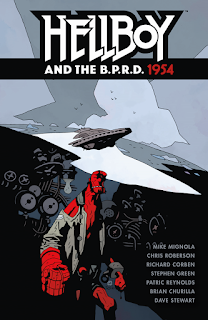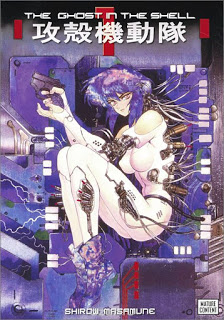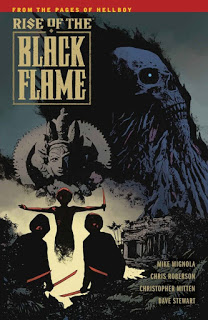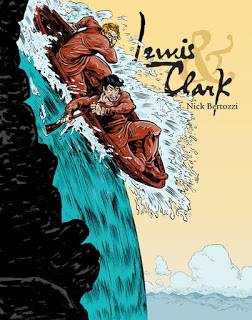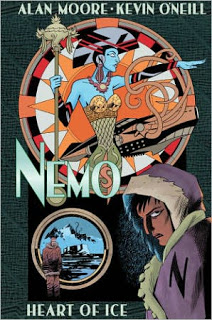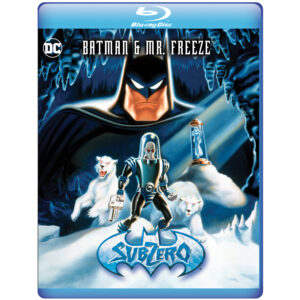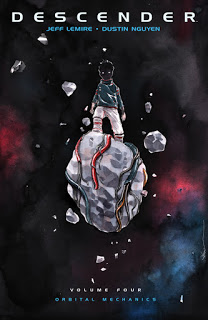Book-A-Day 2018 #102: Hellboy and the B.P.R.D.: 1954 by Mike Mignola, Chris Roberson and various artists
So the big Hellboy story is over — it’s been over longer than most people think, as I argued when I wrote about the second volume of Hellboy in Hell. But Hellboy is still a valuable piece of intellectual property, with a potential movie reboot still kicking around in the background somewhere. So there has to be some Hellboy product coming out on a regular basis, to help keep the lights on at Dark Horse and to keep Mike Mignola busy.
Well, maybe that’s too cynical a view of things. Hellboy is an interesting, fun character, and his history contains vast swaths of space and time to throw additional stories into. It’s not impossible that Mignola and his collaborators are really, really enthusiastic about all of those possibilities and that Mignola is taking on such a large number of collaborators and doing a whole lot of unrelated one-off stories because that’s precisely what the Hellboy universe needs right at this moment. The world is vast; all things are possible. And it’s clear that Mignola and team are enjoying what they’re doing.
So what we have here is Hellboy and the B.P.R.D.: 1954 , containing four miscellaneous stories all taking place in that year and all written by Mignola with Chris Roberson, his current major writing collaborator (following John Arcudi). Two of the stories were two-issue mini-series, another was a single issue, and the fourth appeared in a giveaway comic for Free Comic Book Day in 2015.
(Similar volumes covering the years 1952 and 1953 came out previously.)
The four stories are all entirely separate, which is nothing new for Hellboy: even now, probably a majority of the books featuring him are made up of miscellaneous tales of investigating (and then, inevitably, punching to death) some mysterious folkloric thing in some odd corner of the world. The best of the short pure-Mignola stories relied on folklore and atmosphere rather than tying everything into the standard Hellboy mythology, and it’s good to see that most of the stories here follow in that vein.
We lead off with a two-parter, “Black Sun,” drawn by Stephen Green in the traditional dark and moody style of other-hands Hellboy-universe stories. I tend to think of that look as being codified by Guy Davis in B.P.R.D., but a lot of people (the Fiumara brothers, Duncan Fegredo, Ben Stenbeck, Tyler Crook, James Harren, and even Fabio Moon and Gabriel Ba) have worked in that vein on various Hellboy-related stories over the years and done good work. “Black Sun” features both Nazis and flying saucers, and is the most core-mythology of the stories here.
Moodiest (and probably best) is the single-issue story, “The Unreasoning Beast,” with art by Patric Reynolds. It has a monkey in it; I probably shouldn’t say more than that.
The other two-parter is “Ghost Moon,” set in Hong Kong. Brian Churilla draws this one, and I found the style to be brighter and more open than most Hellboy stuff. Some of that may be Dave Stewart’s colors, but he colors nearly everything in the Hellboy universe, so it must be a deliberate choice here. This is another story using real-world folklore, but I found it a little pat and obvious.
And last is the shortest piece, “The Mirror,” drawn by Richard Corben. Corben’s grotesques work pretty well for Hellboy, though I personally like his work best in small doses. This is more a vignette than a story, but it’s a nice vignette.
We all know that this book exists because a lot of us like Hellboy and want to keep reading stories about Hellboy, even when there’s no compelling in-story reason for those stories to continue. If that describes you, you’ll probably like this book: it does that Hellboy thing, in the extended-universe manner, and does it pretty well. But if you haven’t gotten into the Hellboy thing yet, go back to the pure Mignola stuff and start there.
![]()
![]()
Reposted from The Antick Musings of G.B.H. Hornswoggler, Gent.

